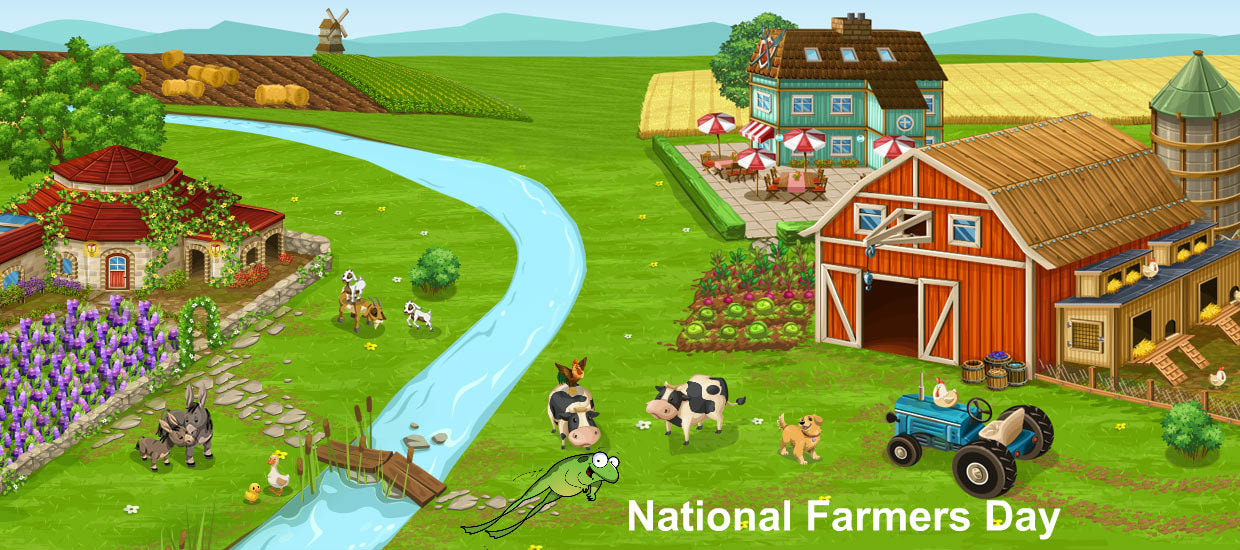1. Farming began around 10,000 B.C.during the First Agricultural Revolution. This is when the first eight "founder crops" of agriculture began. a. emmer wheat, b. einkorn wheat, c. hulled barley, d. peas, e. lentils, f. bitter vetch, g. chickpeas, and h. flax.
2. The Second Agricultural revolution took place between 1700 and 1900 when the Industrial Revolution led to faster and more efficient methods of farming. Even today, many less developed countries are still in the Second Agricultural Revolution.
3. The Third Agricultural Revolution, or the Green Revolution, corresponds in the late 20th century with the exponential population growth occurring around the world. It includes biotechnology, genetic engineering, chemical fertilizers, and mass production of agricultural goods.
4. Fruit farming began sometime between 6000 and 3000 B.C. Figs were one of the first cultivated fruit crops.
5. Plows were invented in the Middle East soon after agriculture began. The earliest plow, called an ard, was probably made from sharpened tree branches. The plow has been cited as one of the most important inventions in the advancement of society.
6. The Mesopotamians built the first simple irrigation system around 7000 B.C. The earliest large-scale irrigation system was created around 4000 B.C. in southern Russia. This system had canals up to 10 feet across and more than a mile long.
7. In the early 1900s, Mary Isabel Fraser visited China and brought back seeds to New Zealand. She grew the first crop of kiwi in 1910. Today, New Zealand produces 1/3 of the world’s supply of kiwi.
8. More than 6,000 different kinds of apples are grown around the world. The biggest producer is China, followed by the United States, Iran, Turkey, Russia, Italy, and India.
9. There are around 2.2 million farms in the United States.
10. U.S. dairy farmers receive less than $1.32 per gallon of milk they produce. The average retail price of milk $2.76. The average cow produces 7 gallons of milk a day, 2,100 pounds of milk a month, and 46,000 glasses of milk a year. There are 350 squirts in a gallon of milk.
11. Farm and ranch families comprise just 2% of the U.S. population.
12. Bananas are the number one fruit crop in the world. They are the 4th largest overall crop, after wheat, rice, and corn. India grows more bananas than any other country. The Philippines, China, and Ecuador are the next three top producers of bananas.
13. One in three farm acres is planted for export.
14. Pigs, a common farm animal, are thought to be the 4th most intelligent animal, after chimps, dolphins, and elephants. A group of pigs is called a sounder. Pigs can also run 11 miles per hour, which is faster than a 6-minute mile.
15. Bees contribute to more than $15 billion worth of crops every year through pollination.
16. Agricultural efficiency has increased over the past century from 27.5 acres/worker in 1890 to 740 acres/worker in 1990.
17. The word “farm” is from the Old French ferme, meaning to “rent, lease,” and the Latin firmare, “to fix, settle, confirm, strengthen.”
18. For every $1 spent on food, farmers get less than 12 cents for the raw product.
19. In 2012, 17 million farmers in 28 countries planted 170 million hectares of biotech crops.
20. The world population will jump from 7 billion to 9 billion by 2050. Farmers will need to double food production by then to keep pace.
I hope you've enjoyed these farming facts and perhaps have developed a greater appreciation for the hard work and dedication of farmers around the world.
You might consider visiting a farmer's market this weekend and purchasing some wonderful, locally-grown fruits and vegetable which are still abundant this time of year. But whatever your weekend plans are, I hope you have some fun and stay safe. Well, this does it for me for this week, but I invite you all back here again on Monday.
PEACE.

 RSS Feed
RSS Feed